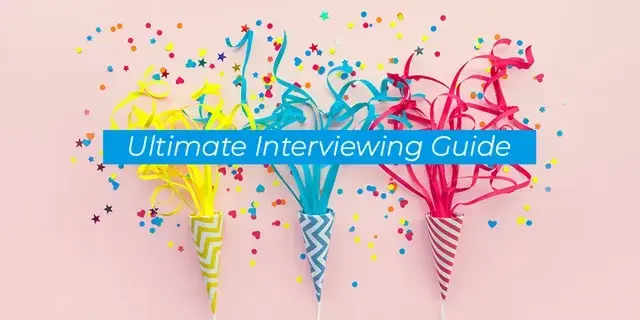Finding great workers in the current climate can be challenging. The competition can easily sweep up applicants, and hiring managers struggle to keep up with all the resumes flooding their open positions. With the current state of the job market, there's got to be a more human approach to hiring that allows companies to get to know applicants without spending hours in front of a computer. Enter community-based organizations. If you're intrigued by this unique way of hiring, let's dive into what community organizations are and how to use them to build a strong recruiting partnership.
What is a community organization?
As communities grow, specific issues become very apparent to local leaders. Community-based organizations fill those needs and make the world around them a better, safer, and healthier place. These organizations tackle issues like homelessness, hunger, youth involvement, life skills, and much more.
Community organizations can look drastically different. Many of these organizations are small, local groups serving a specific area of the country. There are also some community-based organizations that have national name recognition but also have local offices or chapters.
Your city will likely have several local community organizations you can tap into for recruiting help. Finding out which of these nonprofits are available in your area can be challenging, but it's not impossible. Connect with other business leaders in your city to see if they know of any organizations.
Alternatively, you can meet some leaders at events like your local Chamber Of Commerce meeting. You can also look for press on these organizations in the local newspaper or do a quick internet search of community-based organizations in your zip code.
Here are some examples of nationally recognized and local community organizations that companies can partner with:
5 tips for creating a recruiting partnership with community-based organizations
Now that we’ve established what a community-based organization is and how to find one, let’s move into some helpful strategies that will make working with these groups successful.
1. Remember that community-based organizations are not Indeed
Since its inception, Indeed has made a significant impact on the job market. It has a massive database of applicants, allowing for a great experience for hiring managers.
Community-based organizations serve a completely different purpose and give companies a different competitive advantage. Community organizations help you dive deeper and get to know applicants you might have passed over with traditional hiring sources.
Indeed provides companies with a ton of qualified candidates, which hiring managers then have to sort through to find the ones who are the best fit for their business. Community groups take a different approach. Your liaison will likely have an intense knowledge of the community they serve. They can find applicants that fit your needs based on your job description and their deep knowledge of the candidates they have. Then they can help you see those qualities by coaching each applicant they work with.
The scale of this approach will not mirror how posting on Indeed nets a ton of applicants. Instead, you'll get a few handpicked applicants that stand out and help you fill positions without a ton of extra work.
2. Have a clear sense of what you’re looking for
Do you know the kind of applicant you’re looking for? Unlike a job board, you can get precise when partnering with a community organization. Sit down with your community organization partner to describe exactly what you’re looking for and the kind of person that would be successful in the role.
Here are some questions to consider when you’re thinking about the applicant you want to hire:
- What qualities are teachable versus something that a candidate absolutely must possess?
- What personalities work well in your organization and the role you’re hiring for?
- How long do you want this applicant to work with your company?
- Are there any adjacent positions an applicant may have held in the past that give them a leg up when applying for the current role?
3. Don’t be afraid to test out different community organizations to find your match
Working with one community group is not a contract. It’s important to test the waters before working on a deeper partnership. Try to test a few different placements with a few organizations to get a feel for how they handle the process.
Community groups can be a trustworthy partner for your recruiting needs. They’re fully tapped into the market and understand what's happening in your local area. Groups should feel comfortable stepping up and guiding you to place jobs more successfully.
Consider common hiring metrics when tracking if an organization works for you. For example:
- Time to interview/Time to hire: How long does it take to get applicants to interview and hire once you send a job opening?
- Quality of hire: Once you have a few employees from a community org, what is the quality of that hire? You can measure tenure, look at absenteeism and callouts, and talk with that person’s manager to see how the hire is doing.
- Cost per hire: Partnering with a community org costs money. How much are you spending to acquire each person you hire with each community org you are testing?
It's important to track this information and compare the different groups you’re working with to each other and your traditional hiring sources. Once you crunch the numbers, you'll likely know precisely who to target for a deeper recruiting partnership.
4. Once you find an organization, dig deeper to create a partnership
Are you ready to go beyond one-off job placements? Try creating a deeper recruiting partnership where you work closely with 1-2 community organizations. When you set up a recruiting partnership, the organization you work with will be able to devote more time, attention, and resources to filling your open positions.
Before deciding on a partner organization, consider the communities that have provided the best results for your team. Who has sent you quality hires that get through the process quickly while having a decent cost per hire? Beyond the hiring metrics, which organization is the best to work with? Which team would you actually want to work with on a deeper level? Creating a partnership is about more than results. You'll spend a lot of time with the team you decide to go with.
5. Use community organization resources to support your employees in the long run
Community organizations want the hires they place with you to be successful. On top of placing great applicants, many organizations have excellent resources their hires can continue to use even after getting a job.
If you notice that a new employee you got from a community organization is struggling, try contacting the organization to see if any resources are available. For example, if you notice that a community organization employee doesn't have reliable transportation to work, see if they can get a complimentary transit pass or if the organization provides a transportation service.
Before you give up on an employee or let them go, it's crucial to determine what support systems exist to make that new hire more successful.
Community organizations are a great tool in your hiring arsenal
Hiring is often daunting. There are many strategies you can use to source great workers. Tapping into your local community is a great way to give back while also filling open roles.
If you want to use this strategy to find your next hire, setting expectations is important. Hiring through a recruiting partnership like this will net different results than using Indeed or LinkedIn, but the quality of hire can be just as good, if not better. Finding the right communities to tap into takes time, but you'll find an organization that can meet your needs before you know it. Start small, and you'll be getting stellar results in no time.
To learn more, check out our free webinar with Sara Wasserteil, Managing Director at Cara Collective, on how to make community-based organizations a pillar of your sourcing strategy.





